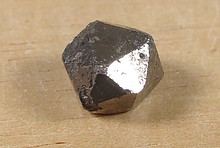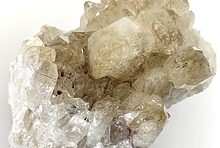Learning CenterWhat is a mineral?The most common minerals on earthInformation for EducatorsMindat ArticlesThe ElementsThe Rock H. Currier Digital LibraryGeologic Time
搜索矿物的性质搜索矿物的化学Advanced Locality Search随意显示任何一 种矿物Random Locality使用minID搜索邻近产地Search Articles搜索词汇表更多搜索选项
╳Discussions
💬 Home🔎 Search📅 LatestGroups
EducationOpen discussion area.Fakes & FraudsOpen discussion area.Field CollectingOpen discussion area.FossilsOpen discussion area.Gems and GemologyOpen discussion area.GeneralOpen discussion area.How to ContributeOpen discussion area.Identity HelpOpen discussion area.Improving Mindat.orgOpen discussion area.LocalitiesOpen discussion area.Lost and Stolen SpecimensOpen discussion area.MarketplaceOpen discussion area.MeteoritesOpen discussion area.Mindat ProductsOpen discussion area.Mineral ExchangesOpen discussion area.Mineral PhotographyOpen discussion area.Mineral ShowsOpen discussion area.Mineralogical ClassificationOpen discussion area.Mineralogy CourseOpen discussion area.MineralsOpen discussion area.Minerals and MuseumsOpen discussion area.PhotosOpen discussion area.Techniques for CollectorsOpen discussion area.The Rock H. Currier Digital LibraryOpen discussion area.UV MineralsOpen discussion area.Recent Images in Discussions
Improving Mindat.orgPyrope from Australia?
20th Feb 2017 00:09 UTCReiner Mielke Expert
20th Feb 2017 02:20 UTCStuart Mills Manager
20th Feb 2017 03:26 UTCJolyon Ralph Founder
Unless you have information contrary to this...
20th Feb 2017 13:33 UTCReiner Mielke Expert

20th Feb 2017 14:05 UTCJamison K. Brizendine 🌟 Expert
Almandine garnets form in folded metamorphic rocks and pyropes form in ultrabasic igneous rocks. So unless the specimen came from an ultrabasic igneous rock (which is doubtful) and the local geology (Flinders Ranges) show folded metamorphic and sedimentary rocks, then it would be probable that this specimen is an Almandine.
Jolyon do you have the citation available from Noble (1983)?
20th Feb 2017 15:38 UTCHarold Moritz 🌟 Expert
Arent the diamond-bearing kimberlites in Western Australia? Not an expert but I dont think there are any in South Australia.
20th Feb 2017 17:53 UTCUwe Kolitsch Manager
Unfortunately, the uploader (Judy Rowe) died last year.
Photo now user-only; referral to this thread added to photo caption.

21st Feb 2017 05:28 UTCAlfredo Petrov Manager

21st Feb 2017 10:07 UTCAndy Stucki (2)
So I expect the the classifictaion by Noble (1983) to be at fault.
It's not entirely the host rock that matters (it does have to be Mg-rich, however) but the pressure the rocks underwent for garnet to be mostly pyrope. And pressure has to be considerable (usually requires depths in excess of 50 miles/80 km).
(And I totally agree with Alfredo that calling a garnet "pyrope" in the trade may not mean that it is all or mostly pyrope)
Andy
21st Feb 2017 10:19 UTCKeith Compton 🌟 Manager
I thought that the garnets from this area were mainly a mixture of spessartine/almandine.
I did find one article that in part alludes to such garnets being spessartine/almandine in the northern Flinders Ranges (although it should be noted that they are not for this specific locality):
Pierre-Alain Wulser (2009) Uranium metallogeny in the North Flinders Ranges region of South Australia, thesis for the Faculty of Science, The University of Adelaide.
Cheers
Keith
23rd Feb 2017 22:13 UTCRalph S Bottrill 🌟 Manager
24th Feb 2017 16:01 UTCUwe Kolitsch Manager




版权所有© mindat.org1993年至2024年,除了规定的地方。 Mindat.org全赖于全球数千个以上成员和支持者们的参与。
隐私政策 - 条款和条款细则 - 联络我们 - Report a bug/vulnerability Current server date and time: 2024.4.27 02:37:15
隐私政策 - 条款和条款细则 - 联络我们 - Report a bug/vulnerability Current server date and time: 2024.4.27 02:37:15











